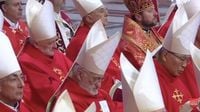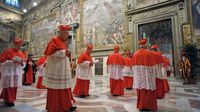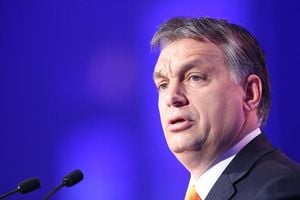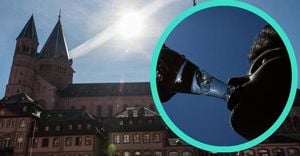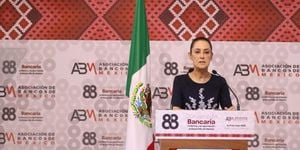As the Catholic Church prepares for a significant transition, the Vatican Conclave 2025 is set to commence today, May 7, 2025. This conclave follows the passing of Pope Francis on April 21, 2025, and will see 133 cardinals gather at the Sistine Chapel to elect his successor. The ceremony marks a pivotal moment for the Church, which currently serves approximately 1.4 billion Catholics worldwide.
The conclave's preparations have been meticulous, highlighted by the installation of a chimney atop the Sistine Chapel on May 2, 2025. This chimney will serve as a visual communication tool to the world, signaling the outcome of the voting process. Black smoke will indicate that no decision has been reached, while white smoke will announce the election of a new pope. The Vatican has upgraded its smoke-producing methods, now using a special mixture of chemicals to ensure clearer signals, a departure from the traditional use of straw and tar.
Voting is scheduled to begin at 16:30 local time (22:30 WIB), and only one ballot will be cast on the first day. If no candidate receives the required two-thirds majority—89 votes out of 133—the cardinals will continue voting four times daily until a new pope is elected. Cardinal Gregorio Rosa Chavez, 82, noted the Church is in a prayerful atmosphere but also prepared for surprises, recalling the unexpected election of Pope Francis in 2013.
As the cardinals arrive in Rome, they come from diverse backgrounds, representing 70 countries across five continents. However, two cardinals will not participate due to health issues. Among those present is Cardinal Ignatius Suharyo from Jakarta, who arrived on May 4. This conclave is particularly notable as it is one of the largest and most international gatherings of cardinals in recent history, with about 80% of the electors appointed by Pope Francis himself.
In a move that has not occurred in 45 years, the Vatican has not ordered new papal robes from its traditional tailors for this conclave. Instead, tailor Ranieri Mancinelli has prepared three robes in various sizes on his own accord, while the Gammarelli family, who have supplied robes for papal elections since the early 20th century, noted that this is the first time they have not received an order for new garments.
Before the conclave begins, the cardinals will take an oath of secrecy, emphasizing the gravity of the election process. This oath extends to all staff involved in the conclave, including medical personnel and support staff, ensuring that the proceedings remain confidential.
Cardinal Luis Antonio Tagle of the Philippines has emerged as a strong candidate for the papacy, with many supporters believing he embodies the spirit of Pope Francis. However, there are mixed feelings about his potential election, particularly from those in his home country. Sister Marilena Narvaez, a former teacher of Tagle, expressed concerns over the political landscape in Rome, stating, "I told him I am not praying for him to become pope." This sentiment reflects the complex dynamics surrounding the election, where support for Tagle is tempered by apprehension.
In addition to Tagle, several other candidates are speculated to be in contention, including Cardinal Pietro Parolin, the former Vatican Secretary of State, and Cardinal Peter Turkson from Ghana. The absence of an official list of candidates adds an element of unpredictability to the conclave, with many experts cautioning against assumptions about the direction the Church will take.
The conclave will commence with a Holy Mass, Pro Eligendo Romano Pontifice, celebrated by Cardinal Giovanni Battista Re. This Mass serves as a spiritual foundation for the cardinals as they prepare to make one of the most important decisions in the Church's history. Following the Mass, the cardinals will process to the Sistine Chapel, chanting litanies and prayers, led by Cardinal Pietro Parolin.
As the world watches, thousands of pilgrims and tourists have gathered in St. Peter's Square, awaiting news of the new pope. The atmosphere is charged with anticipation, as many recognize the historic significance of this moment. Glenn Atherton, a tourist from England, shared his excitement, stating, "I feel so lucky to be in Rome during this historic moment."
The conclave represents not just a transition of leadership but a reflection of the Church's ongoing challenges and the hopes of its followers. With discussions already underway among the cardinals regarding the future direction of the Church, including reforms on handling abuse scandals and financial transparency, the new pope will inherit a complex legacy.
As the day unfolds, the cardinals will engage in a sacred process filled with rites, prayers, and the weight of history. The outcome of this conclave will shape the Catholic Church for years to come, as it seeks to navigate the modern world while staying true to its foundational beliefs. The anticipation for the white smoke to emerge from the Sistine Chapel is palpable, signaling a new beginning for the Catholic Church.
